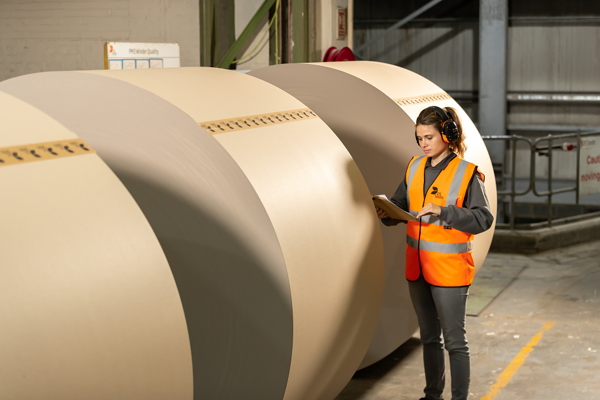How is Paper Made? A Step-By-Step Guide to Our Papermaking Process
Discover how paper is made. Read a step-by-step guide to our recycled fibre papermaking process, including how paper is dried, the paper winding process and pulp preparation. You can also watch our video below.
Step 1: Our pulp and paper process
Paper for recycling is mixed with processed water and then stirred in a giant stainless steel vat, called a pulper, to make a fibre suspension. Impurities are removed using a series of screens, to ensure that we only produce high-quality paper that can be used to make high-performance packaging.
The pulp and paper process is important to reduce waste. Pulp is a by-product of papermaking, and our process produces high-quality results without being detrimental to the environment.
Step 2: Diluting paper fibres
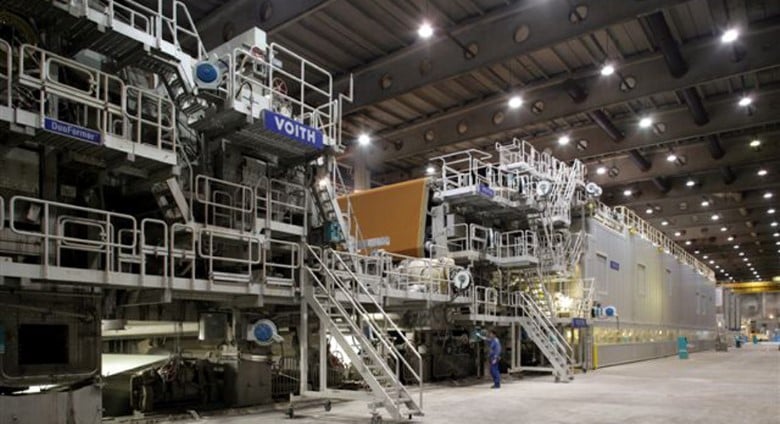
Our paper machines remove water from the fibre solution. At the start of the papermaking process, the solution comprises of roughly 1% fibre and 99% water. Diluting the paper fibres this way allows us to make thin, uniform paper.
Step 3: Wire section
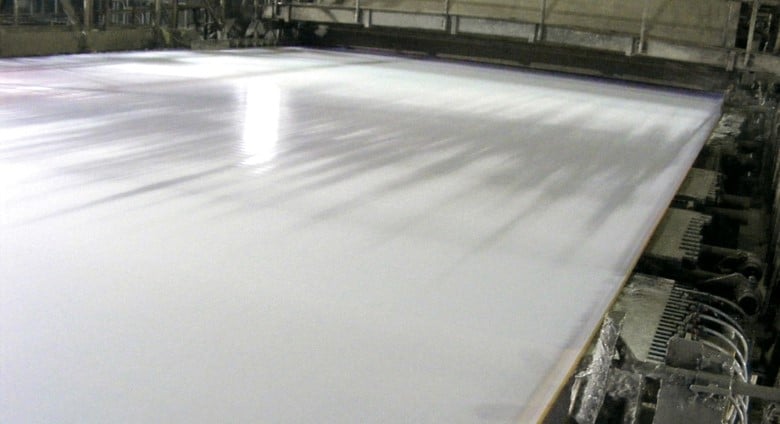
At the wet end of the paper machine sits the headbox, which distributes a uniform jet of watery stock.
The liquid falls onto the wire or forming fabric. Beneath the wire, foils (short for hydrofoils) remove water and improve fibre uniformity, ensuring that the fibres weave together in a tight mat.
The wire passes over suction boxes that vacuum out the water, leaving a soft mat of pulp that forms the paper sheet, also known as the paper web. By now the wire has travelled 30-40 meters. In a couple of seconds, the water content has dropped to 75-80%, and the web has lost its wet sheen.
Step 4: Press section
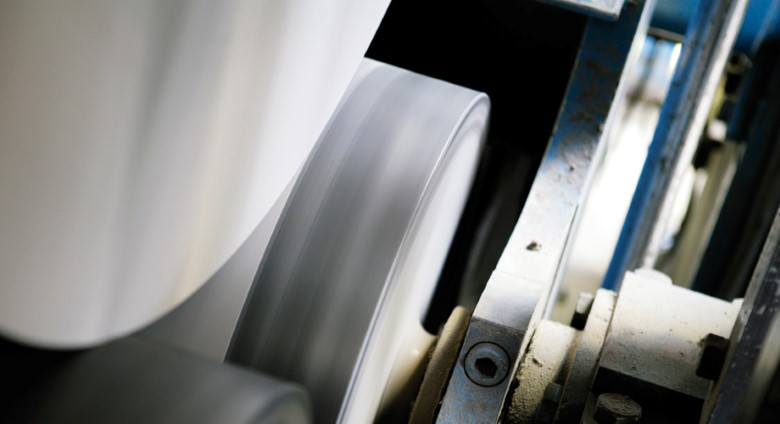
The next stage of water removal consists of passing the paper web through a series of nip rollers that squeeze the water out of the pulp mat. This pressure also compresses the fibres so they intertwine to form a dense, smooth sheet. At this stage, the water content has reduced to between 45 and 55%.
Step 5: How our paper is dried

The paper web now travels through an enclosed space containing a number of steam-heated drying cylinders. They are warmed up to 130ºC using steam heat to ensure that the paper is now 80 to 85% dry.
Wet sizing solution is now applied to the paper in order to add a thin layer of starch to the surface. Starch contributes to stiffness and the bonding of the fibres within the sheet of paper.
After the sizing is applied, the paper passes through another set of heated drying cylinders. In all, the paper web may travel 400 meters through the dry end.
of water is lost in the process
Step 6: Paper finishing
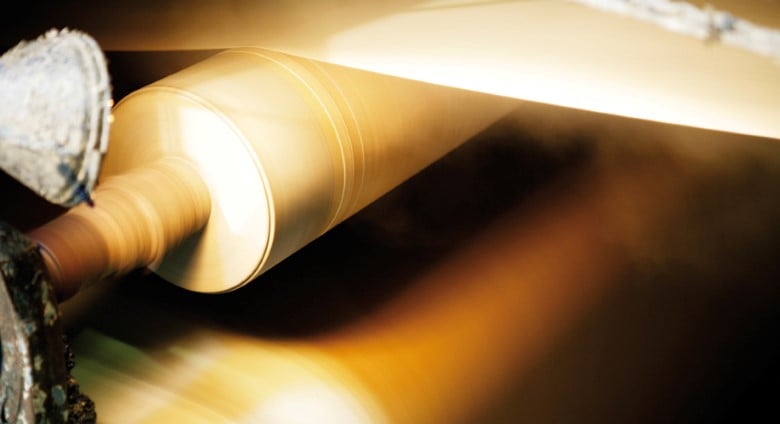
To give the containerboard a smooth and glossy surface to optimise it for printing, the paper passes through a set of smooth rollers, which can be hard or soft, that press the paper, embossing a smooth face on the paper surface.
Step 7: Real-time quality control
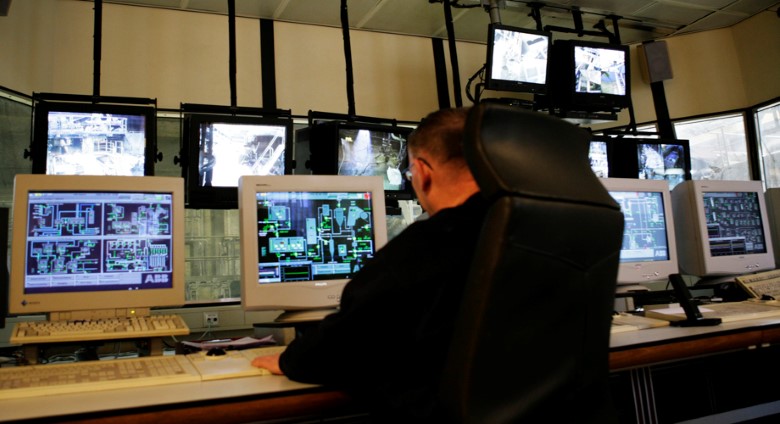
Producing high-quality paper depends on maintaining extremely fine control over the variables in the manufacturing process. The sheet of paper is now inspected by an automated measuring device that detects imperfections.
Step 8: Paper winding
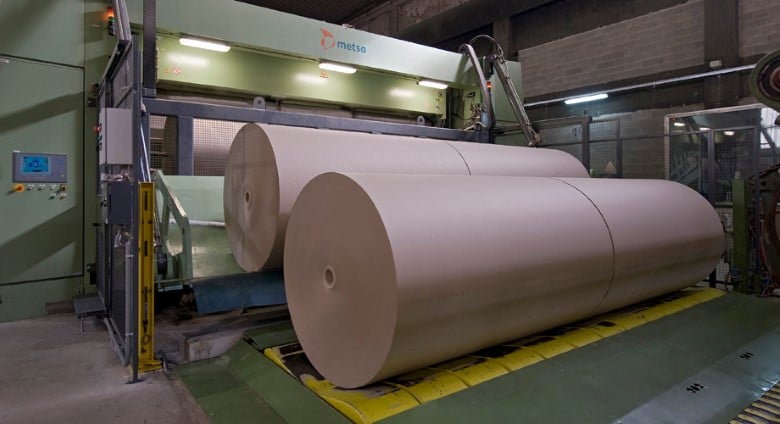
After completing its 500-metre journey, the paper exits from the paper machine and is automatically wound onto a jumbo reel, which can weigh 60 tonnes and be over seven metres long.
The jumbo reel is lifted by crane to a nearby winder, where the paper is unwound and cut into smaller rolls as ordered by the customer, then labelled for shipment.
Step 9: Paper testing
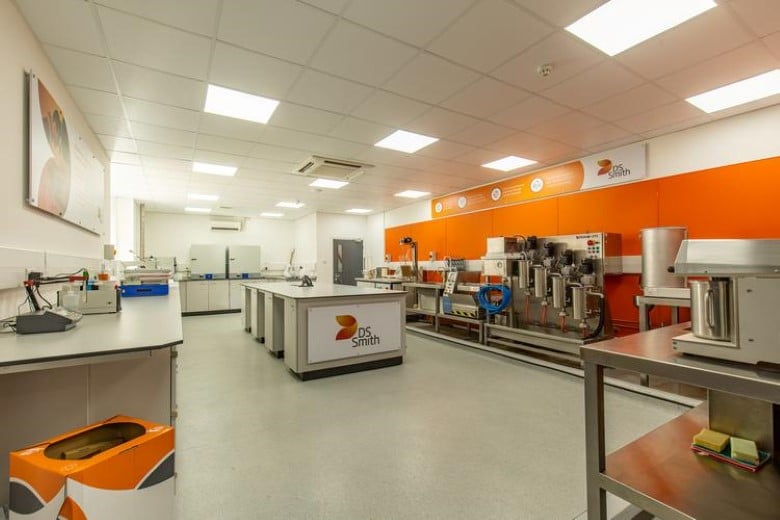
On a regular basis, samples of containerboard are taken to our Quality Control laboratories, to ensure that our paper is the highest quality possible.
A Commitment to Papermaking Quality
We pride ourselves on producing high-quality paper using innovative, industry-leading solutions. Our papermaking process is central to that. Find out about our commitment to quality and how we’re leading the way below.
Related stories:
